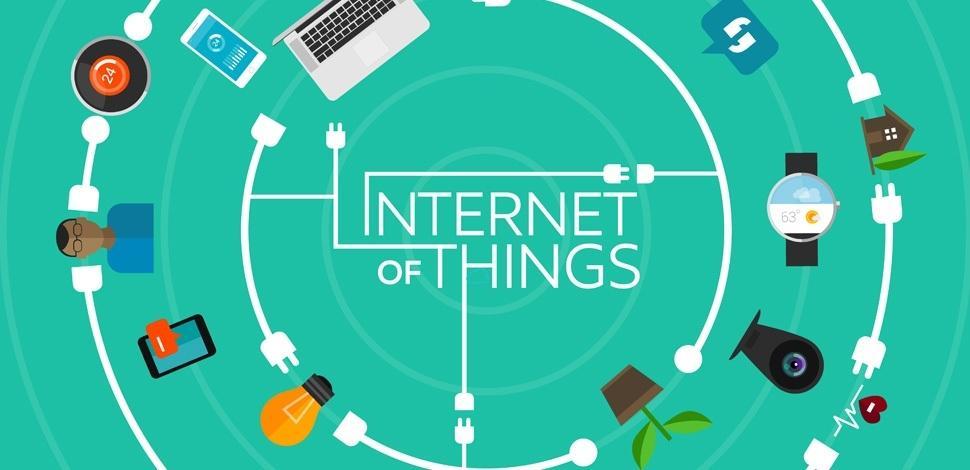How the Internet of Things Changes the B2B Model?
28.08.2018
Angelika Siczek

The Internet of Things is a concept that has been established for several years in the consciousness of B2C stores. Even the use of beacons allows you to generate a unique shopping experience, such as illuminated shelves to locate the item you are looking for in a stationary store. Offline is increasingly connected to online, and the Internet of Things (IoT) supports this phenomenon. The B2B sector is also increasingly looking at the Internet of Things.
WHAT OPPORTUNITIES CAN THE INTERNET OF THINGS GIVE B2B?
Simply put, the Internet of Things is a network of connected devices that collect and exchange data. Thanks to the ever-increasing number of devices recording huge amounts of data, IoT products open up new opportunities for B2B organizations that go beyond traditional markets, drive innovation and open up new sources of revenue.
Companies using the IoT capabilities can expect some important advantages:
Stronger relationships with customers – thanks to the data that IoT products open, manufacturers of products for the first time have more information about the end user than wholesalers or “retail” brokers. IoT data helps these companies optimize customer experience by using insight into their behavior in real time.
Increased predictability – thanks to sensors that collect data in IoT products, product manufacturers can anticipate problems and predict when the equipment is worn out or needs to be repaired. According to McKinsey, this could reduce maintenance costs by up to 40% and halve unplanned downtime.
Production optimization – Replacing the assumptions with real-time data on how products are used by customers, IoT can drastically improve the way products are designed, manufactured, sold and serviced.
Supply chain efficiency – for more devices and vehicles connected to the Internet, there will be transparency throughout the supply chain to ensure real tracking of shipments.
Inventory efficiency – Inventory management an d efficient replenishment of stocks is a constant challenge for manufacturers. But because IoT products automatically change the order of consumables and parts when they are needed, there is less need to store a large amount of inventory.
So how do B2B business models change to take advantage of these opportunities and unlock new sources of revenue?
B2B CONVERGENCE
It is clearly visible that due to the development of e-commerce, many manufacturers are switching to the direct sales model (D2C), with the exception of the existing sales channels. Where the brand can provide the customer with a clear reason for direct purchase, there is, of course, a chance to unlock new revenue streams, increase customer margins and experience.
As we saw in the case of serious D2C failures, customers may initially not look for products on dedicated websites, unless they have a very strong motivation. However, due to the quality (and quantity) of data captured by IoT product sensors, industrial goods, and product manufacturers can benefit from real-time insight to offer customers a valid reason to directly engage in exchange for value-added services. What’s more, product manufacturers see the need to deliver value in excess of their physical products and use sensors, software, and services to increase the value of their products. IoT data may also be sold to other companies opening new B2B channels.
In connection with the above, one should expect a further blurring of lines between B2C and B2B business models, and B2B and B2C companies competing for new (and sometimes the same) markets.
RESTORING INCOME MODELS
IoT offers the opportunity to transform potential one-time buyers into long-term customers through recurring business models.
When we reach a point where almost anything can be sold as a service, manufacturers will use IoT sensor data collection to run services based on ready and subscription payments that provide more balanced revenue streams. We can even perceive the producers of IoT products through the prism of services and the amount of data processed, not the equipment itself.
Achieving better digital experience for customers requires solutions from B2B organisations of a complex sales ecosystem, and B2B subscriptions will only be valid if they provide the customer with clear value, regardless of whether it is a convenience or simplifying the B2B purchase process. Fortunately, B2B subscription models are not a huge step compared to regular B2B purchases (in which customers usually buy, in bulk, from the same producers).
From ink ordering printers, when the level is low compared to servers that can be actively maintained, IoT devices give manufacturers the opportunity to expand services and unlock new revenue sources, creating a more predictable revenue stream along the way.








